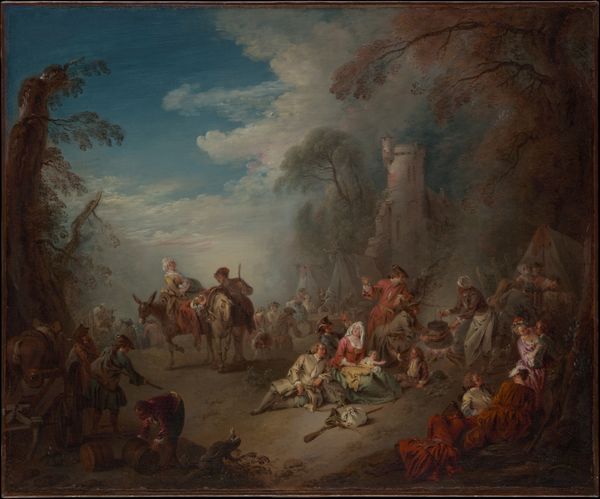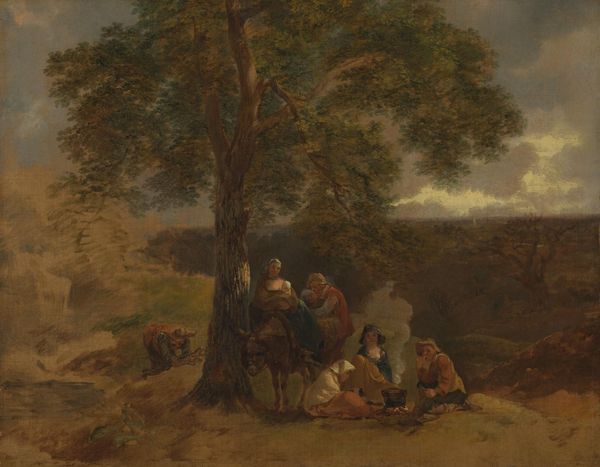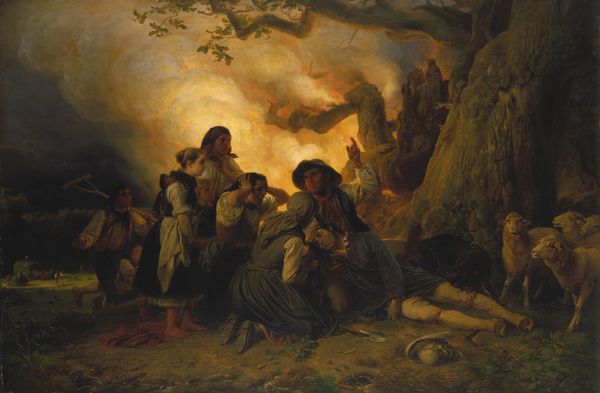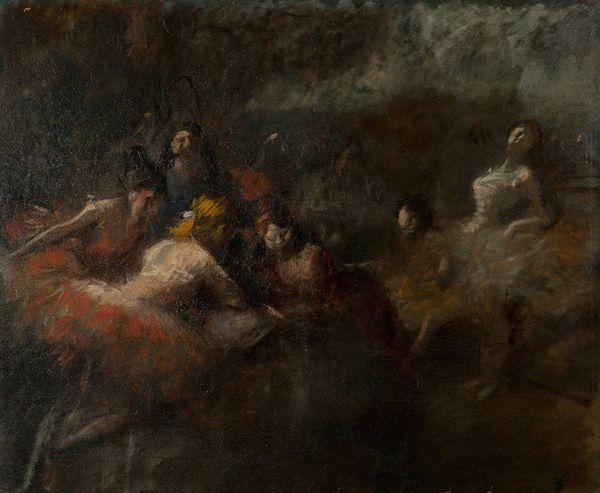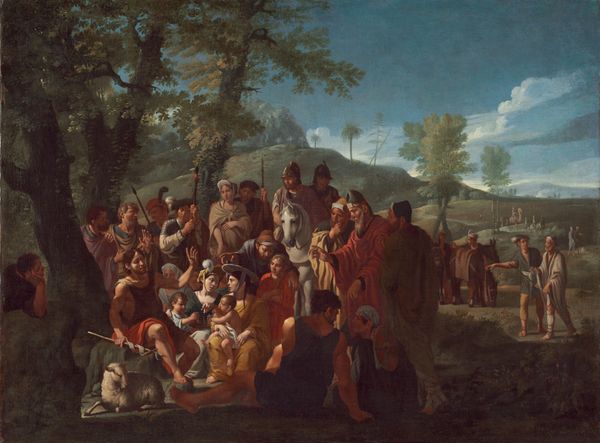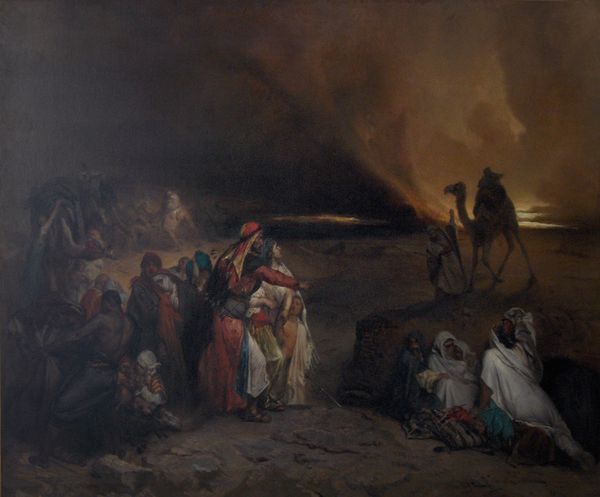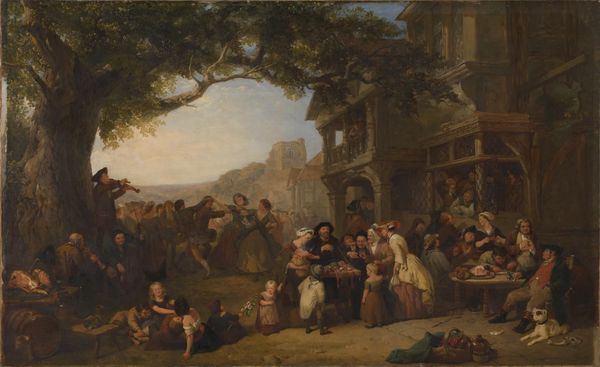
painting, oil-paint
#
figurative
#
baroque
#
painting
#
oil-paint
#
landscape
#
figuration
#
genre-painting
#
rococo
Copyright: Public Domain: Artvee
Curator: Watteau's "Bivouac" is an intriguing piece. While undated, it presents a scene of presumed military encampment using oil on canvas, typical of the Rococo period. Editor: It’s undeniably moody. A palette of earth tones dominates. The figures are really compressed; you almost feel like there’s a crowd pushing out of the frame. What about the work’s scale and the visible brushstrokes? Curator: Given the nature of a “bivouac,” it brings up questions about the everyday material conditions of soldiers in that period. Consider the worn fabrics, the presence of women and children—it all points towards the informal aspects of war. Are they participants, victims, or something in between? Editor: Right. Looking closer, this is less about glorifying military exploits and more about their daily existence, especially regarding women's involvement in and around the military and questions about their positions in traditionally masculine spaces. The haze almost obscures their identity—making one consider those social standings at this point in history. Curator: Absolutely, and the choice of oil paint itself becomes significant. Oil allows for those blended tones, almost obscuring outlines which might reinforce our understanding that the labor, the application of paint itself mirrors the indistinct, blurred roles present within that type of camp setting. The medium serves the message. Editor: Agreed. I am stuck on how genre paintings also act as historical records. And this historical record shows the grim realities and complexities, it's far from the pomp and circumstance often associated with this period, as it acts as an artifact preserving their stories. The clothing, tools, and bodies themselves hint at larger social inequalities, and provide information about the lives and hierarchies of common folk involved in such scenes. Curator: It does highlight Watteau's awareness of class and status. His ability to use paint to communicate these dynamics—rather than some idealized history—gives us something much more insightful. Editor: For sure. Looking at this scene prompts critical questions about access, precarity, and who gets remembered, and whose realities get conveniently erased or repackaged. Curator: It's that tension between beauty and brutality that makes it a powerful study of material culture, inviting reflection. Editor: Definitely. It leaves you pondering on the blurred lines of survival and power in those past conditions, as well as their reverberations in our current landscape.
Comments
No comments
Be the first to comment and join the conversation on the ultimate creative platform.



